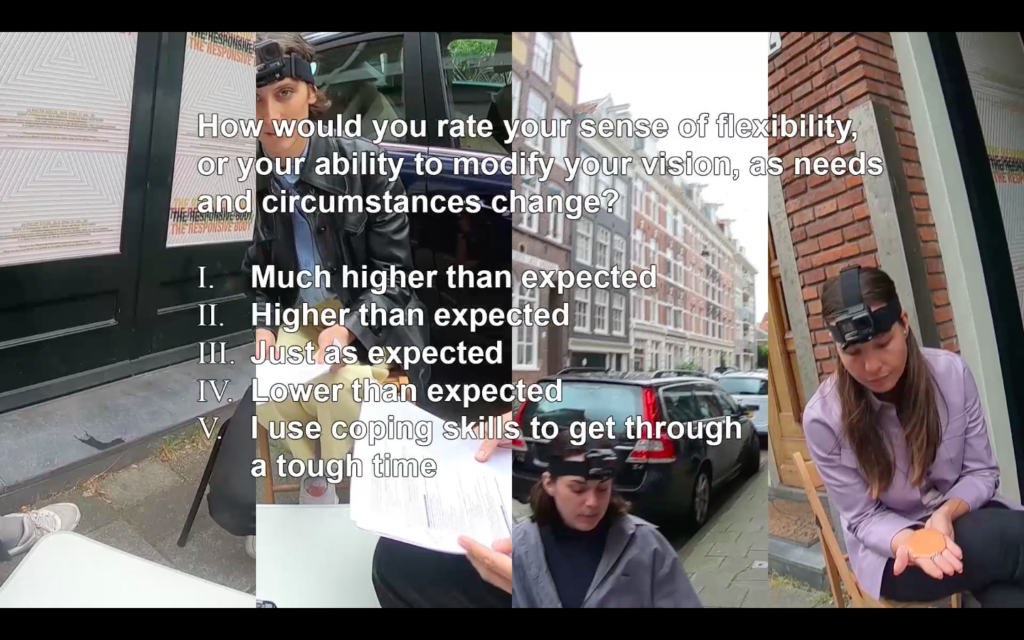Measures for Marwan, 2019
Video, 73min
Performance concept with Isabelle Sully. Concept and editing in collaboration with Leon Filter. Graphic layout by Yin Yin Wong (Publication Studio, Rotterdam).
With Valentina Curandi and Isabelle Sully as the Questioning Party, and Tirza Kater and Tim Mathijsen as the Respondent one.

The video records the first encounter held in space between the parties of artists and space runners/curators involved in the show “Two In A Coffin”. It presents the complete timeline of the encounter and offers four views from each of its participants, rendered simultaneously by a technique of screen splitting. The work inquires the relation between artists’ demands, working space’s limitations and space runners’ responses by literalizing it in the form of a meeting conducted through a questionnaire, the dramaturgy of which reflects on the advancement of demands for working conditions.
The use of questions is redirected to generate an interplay of truth’s approximation, secrecy defence, diplomatic politeness, and insinuation of works – advance the artists’ demands for
The form of a Health and Safety audit is used to inquiry Marwan’s state-of-the-art, a terminology usually referring to ‘the level of development of a device, procedure, process, technique, reached at any time usually as a result of modern methods’ (Wikipedia).In this case, the term addresses the material conditions of the space and addresses also the affective dimension of its project – the relation with its two artists organisers, runners, directors and curators. The Respondent party is presented with questions about the safety measures in place; the feelings of security around and in the space; the working – spatial and relational – conditions.
The adoption of the audit emulates formal bureaucratic processes, and the video presents the tensions in the negotiations occurring within the Respondent party when deciding on an optional answer for every question. At times, the serious and formal tone in the audit fades away with the impossibility of applying some of the health and safety language to the conditions in which an artist space runs, generating hilarious moments among the parties.
The questions generate an interplay of truth’s approximation, secrecy defence, diplomatic politeness, and insinuation of works. The more the audit proceeds, the more the questions enter a realm of possible actions that could be projected into, and taking place during, the exhibition. Some of the optionable answers incubate proposals for future works in the space but are still presented as risky scenarios to which react (such as Viability Test). A score is embedded in each question’s result that activate the Questioning party, demanding the artists to negotiate their position too, and to perform an action, a task or a gesture that intervenes, either materially or symbolically, in the prospect situation given by the question. This moment is reinforced in the video with the use of graphic layouts creating the suspense and detachment necessary to enter sudden and at times absurd performative moments for the audience of the Respondent party and the future one of the show ‘Two In A Coffin’.
Drawing on forms of imitation, emulation and crediting, Measures for Marwan states a technical and conceptual debt, towards its source of inspiration in the artistic practice of one of Marwan’s directors. In How to Grasp Our Time (Tirza Kater, 2016), the conversation between Kater and her elderly father is facilitated and witnessed through the recording of head-mounted Go-pro cameras worn by the two. A clip from Katers’ video work opens Measures for Marwan stating that it’s not in the questions that one is finding answers, but the latter are already situated by the artist initiator of the conversation in the setting and its means for depiction.